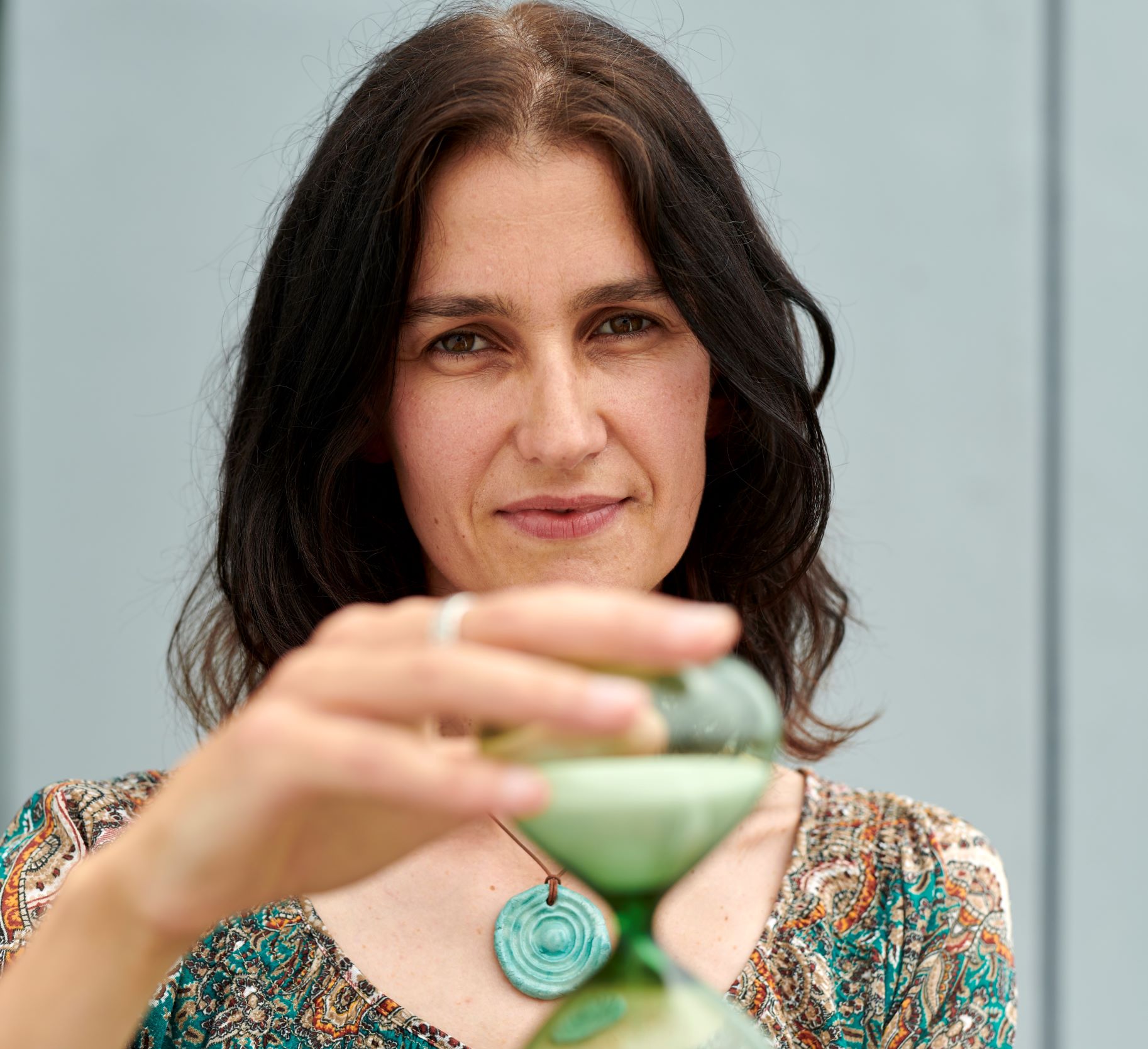Florence Bertails-Descoubes, predictive simulation for cinema, fashion and physics
Date:
Changed on 03/08/2022

I have always been interested in both mathematics and visual art (especially drawing) and I often hesitated between opting for a scientific or an artistic career. During my preparatory studies year, I discovered that the computer-generated images that were increasingly popular in animated film were also a scientific field in their own right (computer graphics), and that there was a renowned laboratory in Grenoble dedicated to this technique (the Imagis team).
From that moment on, I focused my studies on mathematics/IT, more specifically computer graphics, and I joined the Imagis team for my second-year work placement in engineering school. I followed on with a PhD at Evasion, an Imagis spin-off team specialised in the modelling of objects in motion.
I still enjoy working on the modelling of complex phenomena for graphic use (hair, clothing and granular media), in particular for applications in special effects and animated film. In the last ten years, however, I have also made a significant move towards the field of complex matter mechanics and physics, for which a realistic, robust and effective modelling of complex phenomena plays a key role (in the reverse design of clothing or architectural structures, natural risk prevention or sports physics, for example).
Interactions between computer graphics, mechanics and physics remain relatively anecdotal, whereas we can ultimately anticipate convergences around the predictive modelling of complex systems. This is the theme I hope to develop in the long-term, within a truly multi-disciplinary framework.
To this end, in 2017 I created the Elan team at INRIA Grenoble, which has a unique position halfway between computer graphics and computational physics, and currently brings together theoreticians, numerical engineers and experimenters. Our aim is to design experimentally-proven macroscopic digital models, which can be used not only to achieve extreme realism in films, but also to accurately predict typical non-linear behaviour in streamlined structures (rods, bands and plates) and the coupling of such structures (granular and fibrous media in particular) with various laws of interaction (frictional contact or adhesion).
In order to further accelerate the convergence between computer graphics and physics, in association with Basile Audoly, a physician at the Ecole Polytechnique, I created the first international workshop, Graphyz, in 2019, to provide an interface between these two fields. It was so successful that we are hoping to repeat the event at regular intervals.
Florence Bertails-Descoubes is a tenured researcher at Inria in Grenoble, France, heading the ELAN research team in physics-based simulation. F. Bertails-Descoubes’s research interests deal with the modeling and the simulation of complex mechanical objects, mainly for applications in digital movies and virtual prototyping. She is particularly interested in the modeling of nonlinear slender elastic structures (such as rods and plates) and the discrete handling of dry frictional contact for simulating divided matter (such as hair or granulars). She regularly presents her work at premier international conferences in Computer Graphics such as ACM SIGGRAPH or Eurographics, and occasionally in Computational Mechanics and Physics since a few years. In 2014 she received an ERC starting grant to work on inverse elastic design in the presence of frictional contact.